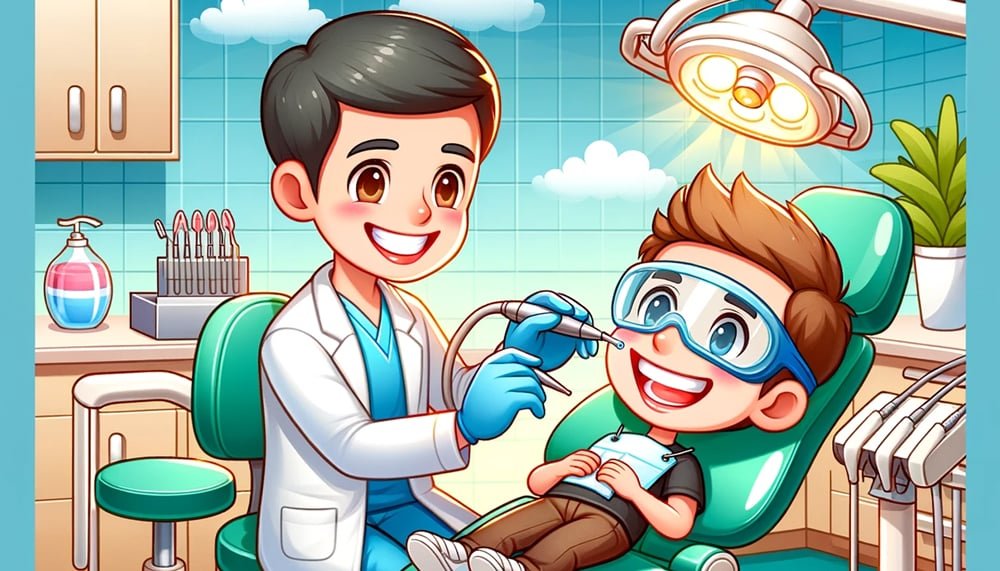The core question is whether teeth bleaching compromises enamel integrity. Research indicates mixed results, and understanding these findings is crucial for making informed decisions.
Scientific Evidence on Bleaching and Enamel Damage
Studies have shown varying outcomes regarding the impact of bleaching agents on enamel.
Some suggest minimal to no significant harm, while others indicate potential risks, especially with high concentration bleaching agents or prolonged use.
How Bleaching Agents Work
Bleaching agents penetrate the enamel to reach the dentin, where they lighten the tooth color. The process can slightly demineralize enamel, but this effect is usually temporary and reversible.
Factors Influencing Enamel Damage
- Concentration of Bleaching Agent: Higher concentrations can pose greater risks to enamel.
- Duration and Frequency of Treatment: Longer and more frequent bleaching sessions can increase the likelihood of enamel damage.
- Individual Enamel Quality: Varies from person to person, influencing susceptibility to damage.
Preventive Measures and Best Practices
- Professional Consultation: Always consult with a dental professional before undergoing teeth bleaching.
- Following Manufacturer Guidelines: Adhere strictly to the instructions of at-home bleaching kits.
- Limiting Treatment Frequency: Avoid excessive bleaching to reduce potential enamel damage.
Real-world Examples and Case Studies
Professional Teeth Bleaching
A study involving professional teeth bleaching showed minimal impact on enamel when conducted under dental supervision.
The controlled use of bleaching agents and professional guidance significantly reduce the risks.
At-home Bleaching Kits
There are instances where improper use of at-home kits has led to enamel damage. These cases often involve overuse or using products with excessively high bleaching agent concentrations.
Understanding Teeth Bleaching and Enamel Health

Teeth bleaching is a popular cosmetic procedure aimed at whitening teeth to enhance one’s smile. However, a common concern among potential users is its impact on dental enamel, the outermost layer of teeth.
Enamel, being the hardest substance in the human body, is vital for protecting teeth against decay and sensitivity.
What is Teeth Bleaching?
Teeth bleaching involves the application of bleaching agents like hydrogen peroxide or carbamide peroxide to remove stains and lighten tooth color.
It’s available in various forms, from professional dental procedures to at-home kits. The process works by breaking down the stain molecules, resulting in a brighter tooth appearance.
The Role of Enamel in Dental Health
Enamel is the thin outer covering of teeth, known for its hardness and translucent appearance. It serves as the first defense against physical and chemical harm.
Despite its toughness, enamel can be worn down by abrasion, erosion, or chemical attack, leading to sensitivity and increased risk of cavities.
Ensuring Enamel Safety During Teeth Bleaching
Teeth bleaching, when done correctly, can be a safe way to enhance one’s smile. However, it’s crucial to adopt preventive measures to safeguard enamel health.
This part of the article focuses on these preventive strategies and explores alternative solutions for those seeking whiter teeth without the risks associated with bleaching.
Preventive Strategies for Safe Bleaching
1. Professional Supervision
- Dental Assessment: A pre-bleaching dental check-up is essential to assess the health of enamel and identify any underlying issues.
- Guided Treatment: Professional bleaching under the supervision of a dentist ensures controlled application and monitoring.
2. Choosing the Right Bleaching Agent
- Approved Products: Use only ADA-approved bleaching agents to minimize risks.
- Lower Concentrations: Opt for products with lower peroxide concentrations to reduce enamel exposure to harsh chemicals.
3. Adherence to Instructions
- Application Time: Follow the recommended application time to prevent overexposure.
- Frequency of Use: Limit the frequency of bleaching treatments as advised by dental professionals.
Alternative Whitening Solutions
For those concerned about the potential risks of traditional bleaching, several alternatives offer safer ways to achieve a brighter smile.
1. Whitening Toothpaste
- Mild Abrasives: These toothpaste use mild abrasives to remove surface stains without harsh chemicals.
- Enamel-Safe Formulas: Many are specifically designed to be safe for enamel.
2. Dental Veneers
- Custom-made Shells: Veneers are thin shells custom-made to cover the front surface of teeth.
- Color and Protection: They provide both a whitening effect and added protection to the tooth surface.
3. Natural Remedies
- Baking Soda: A mild abrasive that can gently polish away surface stains.
- Fruits and Vegetables: Crunchy fruits and vegetables can help to naturally clean and whiten teeth.
Long-term Implications and Maintenance
Maintaining Dental Health Post-Bleaching
- Regular Dental Check-ups: Essential for monitoring enamel health and maintaining overall oral hygiene.
- Avoiding Stain-Causing Foods: Reducing the intake of stain-causing foods and drinks like coffee, tea, and red wine helps maintain the bleaching results.
Monitoring Enamel Health
- Sensitivity Checks: Be alert to any changes in dental sensitivity, a potential indicator of enamel wear.
- Visual Inspections: Regularly inspect teeth for signs of enamel erosion or discoloration.
The Societal Perception of White Teeth
Teeth bleaching, beyond being a dental procedure, reflects societal values and perceptions. White, bright teeth are often associated with health, youth, and social status.
This perception drives the popularity of teeth bleaching, but it also raises important considerations about body image and self-esteem.
Influence on Self-Image and Confidence
- Positive Effects: Many individuals report increased confidence and satisfaction with their appearance after teeth bleaching.
- Potential Risks: There’s a risk of developing an obsession with achieving the ‘perfect’ smile, leading to overuse of bleaching products.
Ethical and Social Considerations
- Realistic Expectations: Promoting realistic beauty standards and healthy practices is crucial in dental cosmetics.
- Accessibility and Equality: Ensuring that cosmetic dental procedures like teeth bleaching are accessible to a wider population without exacerbating social inequalities.
Advancements in Dental Cosmetics
The field of dental cosmetics is continuously evolving, with new technologies and materials promising safer and more effective results.
Innovations in Teeth Bleaching
- Gentler Bleaching Agents: Research is focusing on developing bleaching agents that are effective yet less harsh on enamel.
- Customized Treatments: Personalized bleaching treatments based on individual dental profiles and enamel sensitivity are becoming more prevalent.
Future Trends
- Biocompatible Materials: Future developments may include materials that mimic or support the natural structure of enamel, offering protection while whitening.
- AI and Machine Learning: The use of AI in assessing the suitability of teeth bleaching and predicting outcomes based on dental health data.
Conclusion: A Balanced Approach to Teeth Bleaching
Teeth bleaching, when approached responsibly, can be a safe method to enhance dental aesthetics.
However, it’s vital to balance the desire for whiter teeth with the importance of maintaining enamel health and overall dental well-being.
The future of dental cosmetics holds exciting possibilities, but the core principle remains the same: prioritize health and realistic beauty standards.
